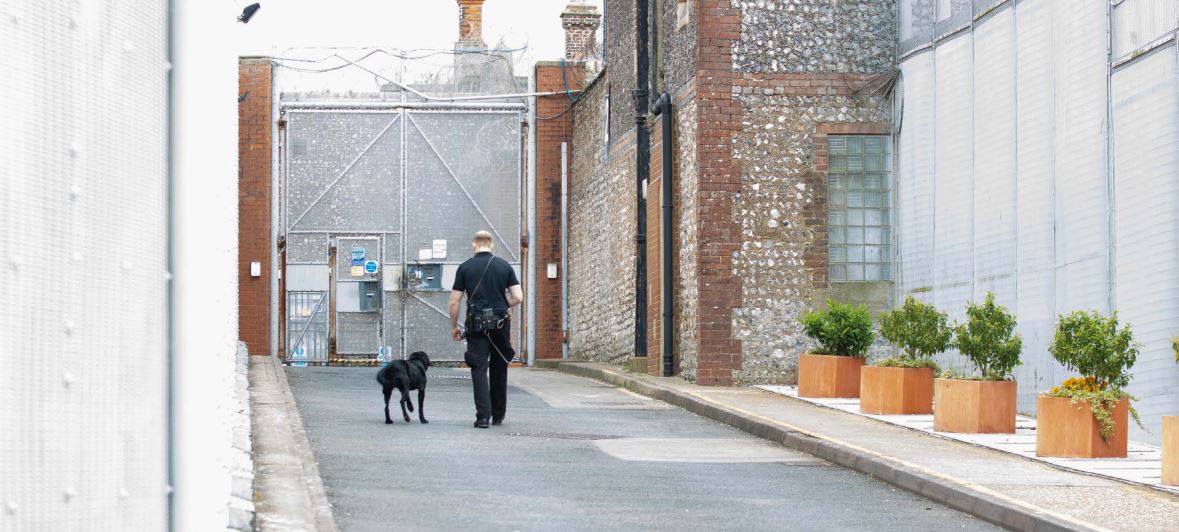
Prisons
We inspect all prisons at least once every five years, although most are inspected every two to three years, and some high-risk establishments may be inspected more frequently. In England and Wales, men’s prisons are organised into four categories (information taken from gov.uk).
- Category A: These are high security prisons. They house male prisoners who, if they were to escape, pose the most threat to the public, the police or national security.
- Category B: These prisons are either local or training prisons. Local prisons house prisoners that are taken directly from court in the local area (sentenced or on remand), and training prisons hold long-term and high-security prisoners.
- Category C: These prisons are training and resettlement prisons; most prisoners are located in a category C. They provide prisoners with the opportunity to develop their own skills so they can find work and resettle back into the community on release.
- Category D – open prisons: These prisons have minimal security and allow eligible prisoners to spend most of their day away from the prison on licence to carry out work, education or for other resettlement purposes. Open prisons only house prisoners that have been risk-assessed and deemed suitable for open conditions.
Women and young adults are categorised and held in either closed conditions or open conditions, according to their risks and needs. Those considered high risk are categorised as ‘restricted status’, meaning they can only be held in a closed prison and that additional steps are taken to manage the risk that they pose. In exceptional cases young adults may be held in a high security prison (category A).
The inspection of facilities is based on a dynamic risk assessment, taking into account issues such as time since the last inspection, type and size of establishment, significant changes to the establishment or changes in leadership, and information we receive.
Most of our inspections are full and unannounced, assessing the progress the establishment has made since the previous inspection and undertaking in-depth analysis. We give an establishment no more than 30 minutes notice before arriving for an unannounced inspection.
In exceptional circumstances, and on the basis of risk, some inspections will be announced and the prison will be informed in advance of the visit. On our unannounced inspections, the inspection team visits without notifying the establishment in advance. On all inspections, inspectors have the right to carry out inspections and cannot be refused entry by the establishment.
Young offender institutions
We visit young offender institutions annually. These are establishments that hold children aged between 15 and 18. There are currently five young offender institutions in England and Wales.
Secure training centres
Secure training centres are visited every year. These are purpose-built establishments that hold children up to the age of 17. They usually hold girls aged 12–17, boys aged 12–14 and older boys who are considered vulnerable. Ofsted leads these inspections, accompanied by HMI Prisons inspectors.
Immigration detention
We inspect every immigration removal centre (IRC) at least once every four years, on a risk-assessed basis. IRCs hold foreign nationals who do not have a legal right to remain in the United Kingdom but decline to leave. If the centre holds children, we inspect it more frequently.
Short-term holding facilities hold people waiting to be removed to an immigration removal centre or awaiting deportation. We inspect non-residential short-term holding facilities at least once every six years. Residential short-term holding facilities are inspected at least once every four years. Inspections are scheduled on a risk-assessed basis.
We also inspect the escorted removal of immigration detainees from the United Kingdom to their countries of origin. These are usually on chartered flights. We carry out two or three of these escort inspections every year.
Military detention
At the request of the Ministry of Defence, we inspect the Military Corrective Training Centre at Colchester and service custody facilities around the country, which hold military personnel who have been detained or imprisoned. Military facility inspections are conducted every two to three years by agreement and invitation from the military.
Court custody
We carry out three court custody inspections a year. Court cells detain people who are awaiting trial or sentence. We visit all courts with cells in different regions of the country.
